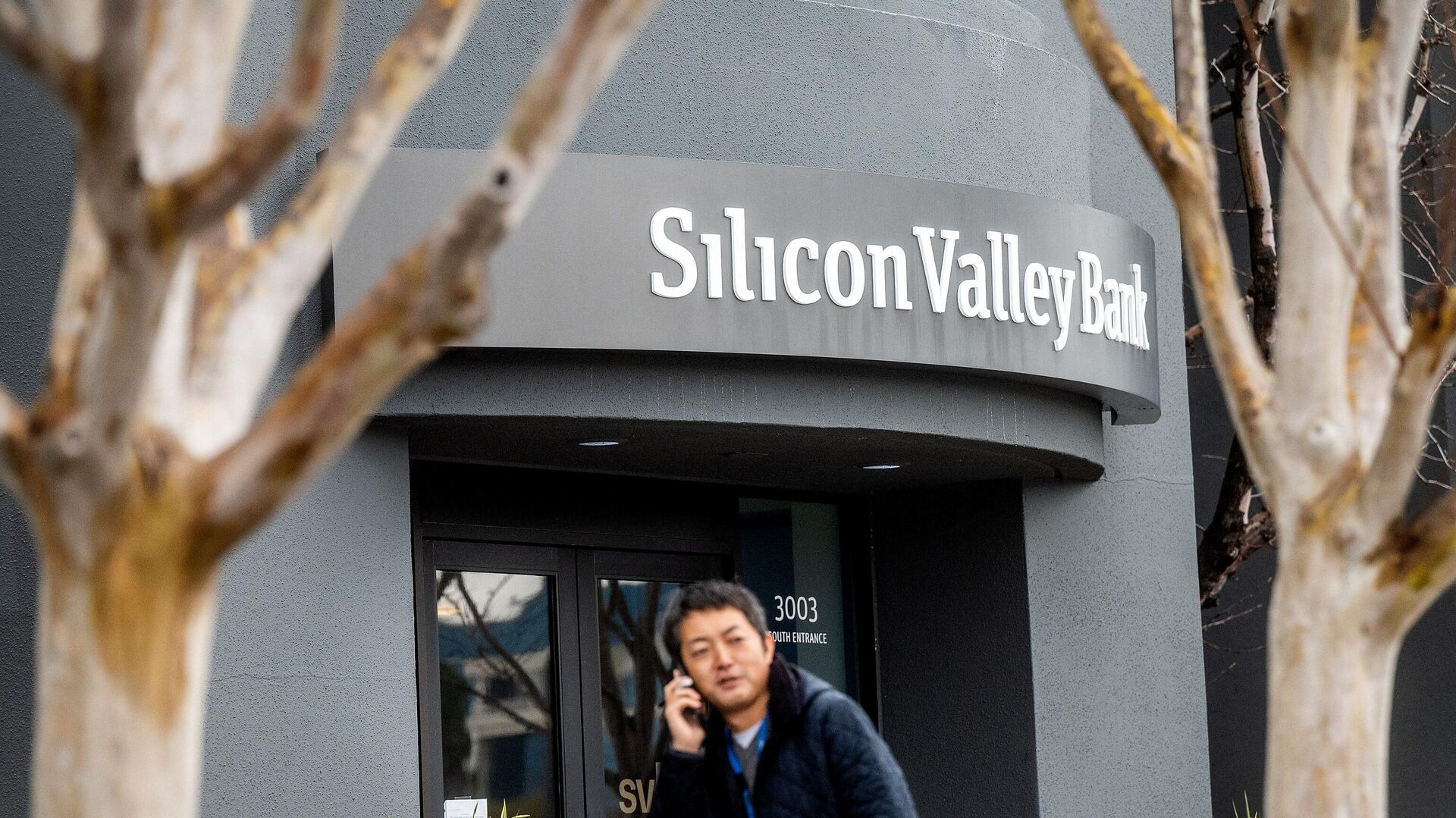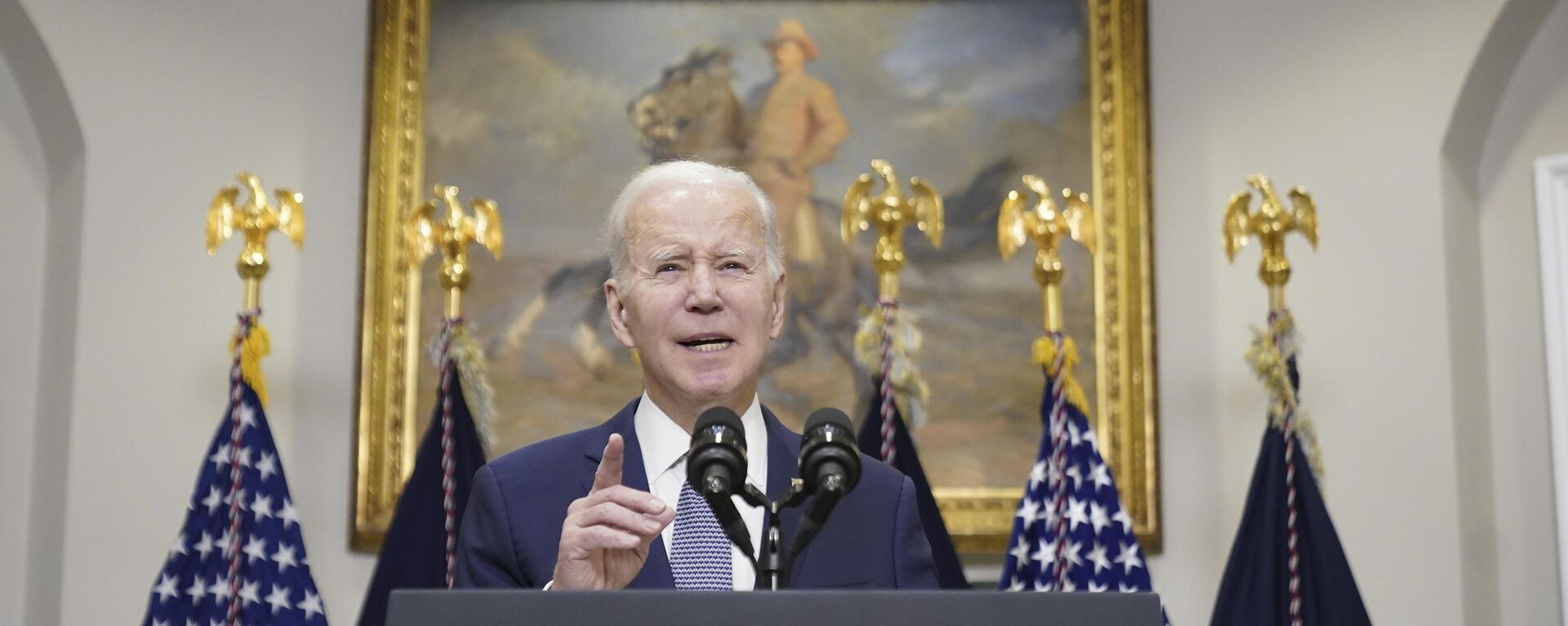SVB and Signature Bank Collapses May Herald Recession in United States

© AFP 2023 / NOAH BERGER
Subscribe
While the ensuing crisis in the United States differs in a number of regards from that of 2008, the "financial fragility" caused by excessive private debt continues to plague the United States, argue professors from the University of Fribourg in Switzerland and the University College London.
The US banking system suffered a serious blow last week with the collapse of the Silicon Valley Bank (SVB), which became the largest bank failure in the United States since the financial crisis of 2008.
Having seized the SVB on March 10, US regulators proceeded to close the New York-based Signature Bank two days later, raising concerns about what these bank failures might entail for the United States’ banking system as a whole.
Sergio Rossi, professor of macroeconomics and monetary economics at the University of Fribourg in Switzerland, told Sputnik that the ensuing situation actually has certain similarities with the 2008 financial crisis.
One of these similarities, for example, is that the banks in trouble then and now suffered a so-called bank run, i.e. a rapid influx of depositors eager to withdraw their money.
“Secondly, these troubles also rapidly affect the interbank market, where creditor banks seek to get repaid by debtor banks, fearing that the latter banks are also going to be illiquid and insolvent,” Rossi said. “This induces a domino effect that can rapidly give rise to a banking crisis, as a result of the interbank market being in fact ‘frozen’ because no bank is willing to provide any credit line to any other bank.”
Other similarities between the two crises, according to Rossi, include a “contagion effect of all this across financial markets, both in the United States and in the rest of the global economy,” and the role of the US monetary policy, as “several banks have been in trouble in earning enough interest income to finance their own interest payments” due to the “increases in the policy rate of interest.”
The professor also pointed out notable differences between the two crises, such as the crypto currency fad that was not a thing 15 years ago, and the fact that a “number of non-performing loans” granted by US banks back in the 2000s had physical collateral, “which in a number of cases creditor banks were still in a position to sell without too many losses for their own business activities.”
“In the current crisis, by contrast, there are also a number of liquidity and solvency problems as regards crypto-assets and their related institutions, and a relevant share of non-performing loans have no physical collateral, as they are just based on speculation across financial markets,” he noted.
“This makes the risk of a new recession in the United States a likely probability, also in light of the several problems that currently affect the global economy with regard to both supply-chain bottlenecks and inflationary pressures that have been reducing both real growth perspectives and employment levels across the world,” Rossi warned.
His concerns were echoed by Steve Keen, honorary professor of economics at University College London and author of “Debunking Economics” and "The New Economics," who argued that the Federal Reserve System “did nothing to reduce the level of private debt” since the 2008 crisis that was caused by “the bursting of a credit bubble.”
“The financial fragility that debt causes is still with us, but this event is caused largely by the Fed itself,” Keen mused. “We could experience a recession because high interest rates are making servicing debt very expensive compared to the last 15 years, and credit could turn negative as a result and cause a recession.”
He did add, however, that “it is nowhere near the certainty that 2008 was.”
Both scholars also concurred that the closure of the Signature Bank only a couple of days after the collapse of the SVB might be a dire portend for the US banking system.
According to Rossi, this is a “clear sign that a major banking crisis is looming in the United States, which will rapidly involve the whole US financial sector, particularly as regards crypto-assets, technology firms and venture-capital-backed companies.”
“The domino effect will not take much time to occur, particularly if the interventions of both US regulators and the US administration are not enough to convince financial institutions as well as bank depositors that the insolvency of Silicon Valley Bank and Signature Bank will not pose a major problem to the whole banking sector, and beyond it to financial markets both in the United States and in the global economy, particularly at a time when crypto-assets represent also a ticking time-bomb,” he added.
Keen also observed that unmet liabilities of a failed counterparty are “assets of other financial institutions,” and that The Fed “will be forced to focus on sustaining asset prices - at highly inflated levels that they caused via QE (Quantitative Easing) - and to forget about fighting consumer price inflation for a while.”
He also did not seem particularly impressed with the way the Biden administration and the Fed have been handling the situation, noting how they essentially “set up this crisis” in the first place “by inflating asset prices via Quantitative Easing.”
“They thought this would restart private lending, but that is just ignorant of how banks actually lend, and with private debt already at historic highs, it wasn't a good idea anyway. Most of the QE money went into asset markets and caused the value of both stocks and bonds to rise,” Keen explained.
“Now that they're trying to control inflation with interest rates, they're causing the value of both stocks and bonds to fall, and this is the proximate cause of the crisis. Inflating asset prices was the bad side effect of a bad idea,” he added. “Unless they do something to both reduce asset prices and reduce private debt, we'll remain in this predicament.”
Meanwhile, Rossi argued that, while the bail-out plan provided by the Biden administration should “avert a major bank run,” it may not be enough to avoid a banking crisis,” in so far as a number of other banks in the United States could experience some illiquidity or even insolvency problems that freeze the interbank market, thereby generating also a systemic banking crisis, hence a global financial crisis.”
“This is even more problematic in light of the huge amount of public debt with respect to national income that affects both the United States and the global economy, particularly since US interest rates show an increasing trend as a result of the Fed's wrong policy strategy to curb inflation, as if the latter were the result of excessive demand on the market for produced goods and services,” Rossi said.


